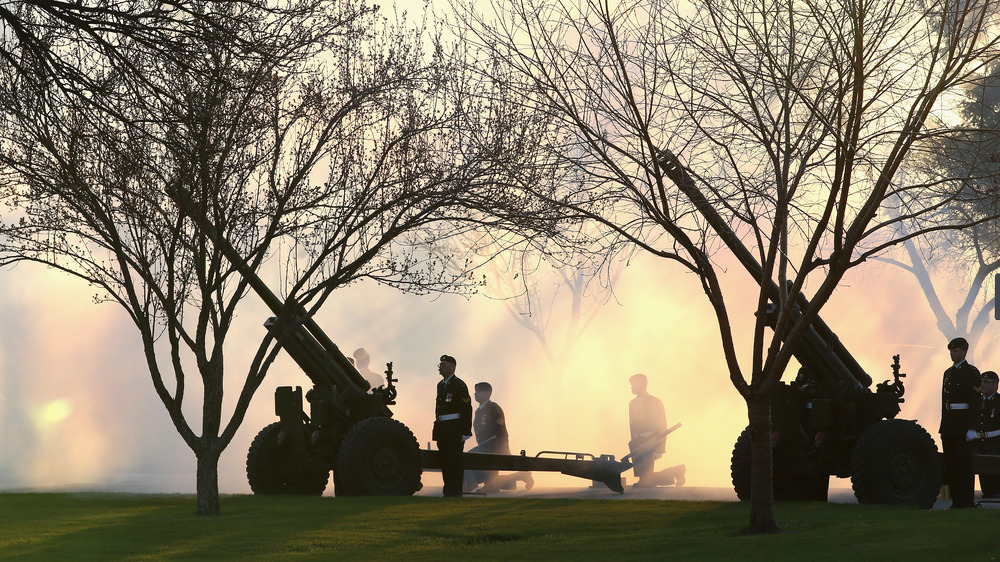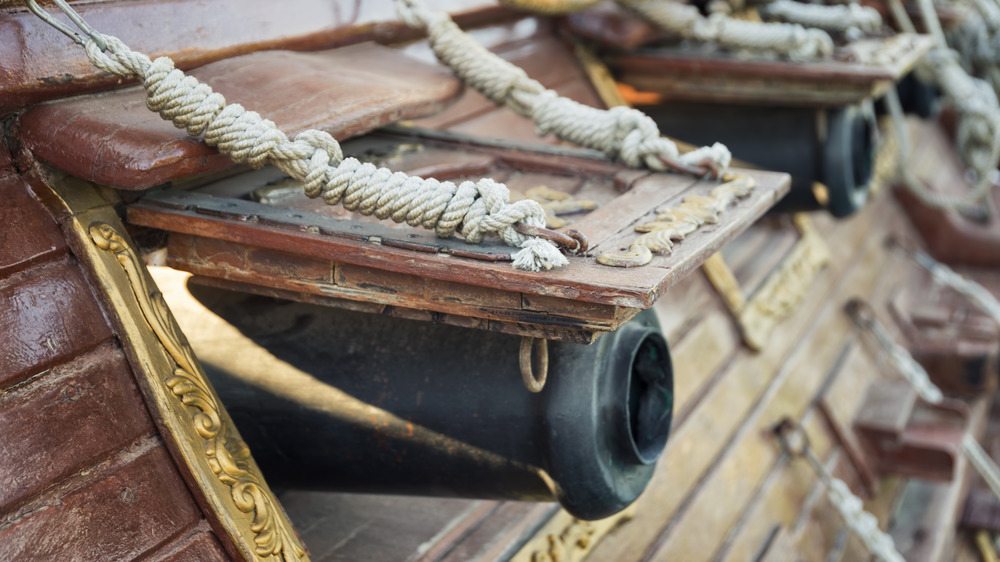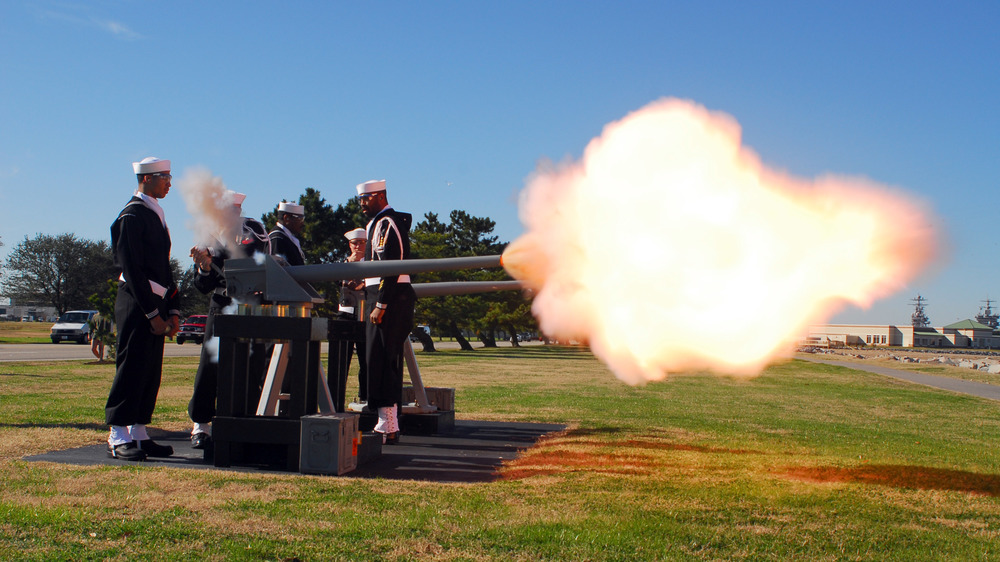The History Of The 21-Gun Salute Explained
On January 20, 2021, Joe Biden and Kamala Harris were sworn in as President and Vice President of the United States, and as NECN reported, the moment was honored with a traditional 21-gun salute at Arlington National Cemetery. As Americans, we all just accept that we celebrate special moments by firing guns, but this custom had to start somewhere. So let's take a look into the storied history of the 21-gun salute, and correct a few common misconceptions you might have about it on the way.
Let's start with what a 21-gun salute actually is. You're probably imagining those scenes in the movies where seven soldiers at a funeral fire off three successive shots, totaling 21 shots. According to CNN, however, that's not a 21-gun salute. That is what is called a three rifle volley, and it's reserved for the funerals of fallen veterans. The custom comes from an old war practice of both sides calling a pause in fighting in order to remove their dead from the battlefield. Afterwards, each side would fire three successive shots in order to signal that they had gathered their fallen soldiers and fighting could resume.
In the context of the 21-gun salute, the guns are specifically artillery, not rifles. The salute usually consists of three cannons firing seven times, for a total of 21 shots. The practice dates back centuries, back to before cannons even existed.
The 21-gun salute originally demonstrated peaceful intentions
According to the U.S. Army Center of Military History, the roots of the 21-gun salute actually date back to before guns were even invented. It has been a more or less universal custom for people across the globe to perform some kind of action that render their weapons unusable in the moment in order to show that their intentions are peaceful. The cannon salute came about in the 14th century. Since early cannons could only be fired once before having to take up the lengthy process of reloading them, warships would fire their cannons upon approaching foreign ports to show they couldn't fire them again. The original practice was to fire seven-gun salutes, a number inspired either by the Bible or by the stars. Whether inspired by the Sabbath or the moon phases or the number of known planets in the solar system at the time, the exact reason is not known with certainty. Today I Found Out (found on YouTube) posits that it could have just been that ships only had seven cannons on board.
Since batteries on land had more gunpowder, they were able to use more of it in their return salutes, firing three times for every gun on the ship that was coming ashore. The Center of Military History doesn't know how this number came about either, but says it "probably was chosen because of the mystical significance of the number three in many ancient civilizations."
How the 21-gun salute came to be the United States' highest honor
The U.S. Department of Veterans Affairs states that by 1730, the British navy had taken up the 21-gun salute for certain special occasions having to do with the royal family, but it was not made the standard royal salute until 1808. According to Military One Source, the U.S. National Salute was aligned with the number of states in the union starting in 1810, when there were just 17. But they kept piling up, so that year the War Department just standardized the Presidential Salute to 21 in 1841. The National Salute was changed to 21 in 1890. The only salutes tied to the number of states now are the Salute to the Union, which is fired off on Independence Day, and those honoring the funerals of presidents, former presidents, or presidents-elect.
Mr. Biden's wasn't the only 21-gun salute on the day of his inauguration. Never one for honoring tradition, President Donald Trump ditched the ceremony that honors the country's peaceful transition of power, instead holding his own departure ceremony the morning of January 20 at Joint Base Andrews. His farewell included a 21-gun salute, according to USA Today. After telling the country to "have a good life," he boarded a plane for his Mar-a-Lago resort in Palm Beach, Florida. As Air Force One departed with Mr. Trump on board, a PA system played Frank Sinatra singing "My Way."


